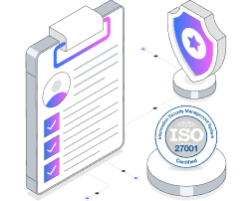A Complete Guide to Cybersecurity Assessment Services
If you are an organization trying to better understand security vulnerabilities, defend against or comply with regulatory requirements, and proactively assess your risk posture, cybersecurity assessment services are crucial. This guide by Qualysec Technologies shows what such services involve, their types, benefits, and how they can be approached. What Are Cybersecurity Assessment Services? Cybersecurity assessment services involve an evaluation of an organization’s IT infrastructure, policies, and practices to determine the weaknesses and issues and propose remedies. They thereby determine the organization’s current security posture and prioritize measures to protect sensitive data and continue business operations. Key Services of Cybersecurity Assessment Services It is important to understand the types of assessments in cybersecurity to determine the best approach for your organization. Assessment Type Purpose & Focus Baseline Risk Assessment High-level review of all technical assets and their management to pinpoint security gaps. Penetration Testing Simulated attacks on systems to evaluate defenses and uncover weaknesses. Red Team Testing Targeted simulations focusing on specific assets or data to test detection and response. Vulnerability Assessment Systematic identification and prioritization of weaknesses in systems and applications. IT Audits Detailed IT infrastructure review, policies, and procedures for compliance and security. Other than that, there are phishing simulations, compliance security audits, data risk assessments, and bug bounty program evaluations. The Cybersecurity Assessment Services Process Understanding this structured cybersecurity assessment process is important for organizations to choose and focus on those risks and implement the cybersecurity measures to protect digital assets. The following is the process of how a complete cybersecurity assessment for businesses is accomplished – 1. Define Scope and Objectives 2. Identify and Prioritize Assets 3. Detect Threats and Weaknesses 4. Analyze Risks and Assess Impact 5. Exploitation and Testing 6. Develop and Implement Mitigation Strategies 7. Reporting and Documentation Latest Penetration Testing Report Download 8. Continuous Monitoring and Review The cybersecurity realm is living & breathing – it has to be continuously monitored & reanalyzed for new threats, and the controls need to be redefined as the systems and business requirements are modified, i.e., the controls are responsive. Reassess and update a mitigation strategy per schedule for an effective security posture. Common Cybersecurity Assessment Tools and Techniques A combination of automated tools and veteran techniques is the basis for an acceptable cybersecurity risk assessment. This process concerns identifying, measuring, and eliminating threats across an organization’s digital perimeter. Let’s proceed with a structured overview of the tools and methodology used by most of the industry. Vulnerability Scanning Automated vulnerability scanners scan systems, networks, and applications for weaknesses such as missing patches, weak configurations, outdated software, etc. This set of tools offers very detailed reports that allow for prioritisation of remedial efforts and keeping a healthy security baseline in check. Penetration Testing Penetration testing safely simulates real-world cyberattacks to check how well your security systems can handle them. Security experts use trusted tools like Metasploit to try to break into your systems, just like a real hacker would. This helps uncover hidden weaknesses that automated scans might miss. The main goal is to find and fix these issues before an actual attacker can exploit them. Security Audits The security audit includes an extensive check on security policies, procedures, and technical controls. They determine whether quality measures have been filed according to industry standards and their internal policies, and whether all of these measures are current and effective. Audit is a mandatory process to ensure regulatory compliance and further improvement. Risk Assessments It is aimed at identifying and prioritizing possible threats by their possibility of occurrence and impact. They can evaluate these risks by allocating resources to the problems that present the highest risks and putting strategies in place to mitigate them. User Activity Monitoring and Behavioral Analytics Some platforms, such as Teramind, offer an advanced level of monitoring users’ activities and behavioral analytics. They specify baseline activity patterns and identify anomalies, and, in addition, they identify potential data exfiltration pathways. The combination of these tools allows them to integrate with existing security stacks towards real-time monitoring, detailed audit trails, and intelligence to facilitate the risk assessment and compliance process. Network and Asset Scanning Nmap (Network Mapper) is a tool that scans IT systems and networks to find out what devices are there, check uptime, and spot entry points for attacks. These scans give security teams a bird’s eye view of network activity and allow them to be proactive. Security Ratings and Automated Questionnaires The objective, data-driven insights about an organisation’s security posture are provided by security ratings platforms. Through automated questionnaires, third-party risk management is streamlined for evaluating vendor security at scale and validating responses for transparency and accountability. Integrating Assessment Services into Your Security Strategy By assessing parts of your security strategy, you can ensure that you are not building security as a one-time thing but as an ongoing, adaptable one. Embedding these services is a matter of how. Align Assessments with Business Objectives Start by mapping out key assets critical to business operations and that matter most to your customers’ business (and by a healthy margin). Decide on what you want to assess. Make sure that your assessment objectives are in sync with the business continuity, compliance, and risk management objectives. Adopt Industry-Recognized Frameworks Use NIST CSF or ISO 27001 to establish the framework for conducting your assessment. These frameworks come with standardised methodologies such as structuring assessments, prioritizing risks, and aligning with regulatory requirements. A framework guarantees consistency, efficiency, and an agreed-upon way forward for ongoing improvement. Establish a Repeatable Assessment Cycle Build it into your security program as a regular check box activity, but just help transform them into a continuous improvement loop.There should be periodic reviews (quarterly, biannual, or annual) according to your risk profile and industry needs. Findings from each assessment are used to update controls and refine policies, to inform training programs, and to identify what and when management should be trained. Engage Stakeholders Across the Organization Start with at least the process owners, IT, risk managers, and executive





